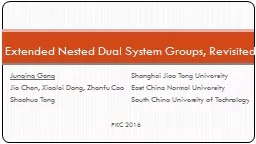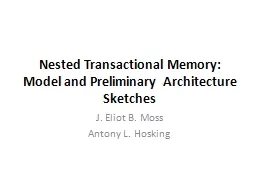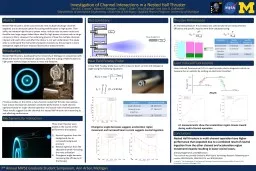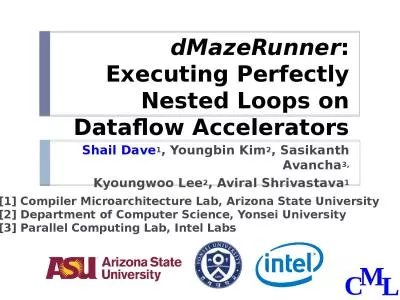PPT-Extended Nested Dual System Groups, Revisited
Author : phoebe-click | Published Date : 2017-10-21
Junqing Gong Shanghai Jiao Tong University Jie Chen Xiaolei Dong Zhenfu Cao East China Normal University Shaohua Tang South China University of Technology PKC
Presentation Embed Code
Download Presentation
Download Presentation The PPT/PDF document "Extended Nested Dual System Groups, Revi..." is the property of its rightful owner. Permission is granted to download and print the materials on this website for personal, non-commercial use only, and to display it on your personal computer provided you do not modify the materials and that you retain all copyright notices contained in the materials. By downloading content from our website, you accept the terms of this agreement.
Extended Nested Dual System Groups, Revisited: Transcript
Download Rules Of Document
"Extended Nested Dual System Groups, Revisited"The content belongs to its owner. You may download and print it for personal use, without modification, and keep all copyright notices. By downloading, you agree to these terms.
Related Documents














